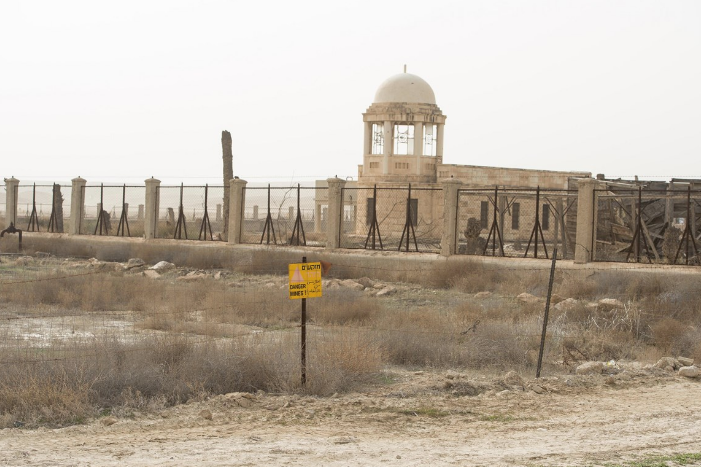Work begins to clear mines from site of Jesus' baptism at Jordan River
An ancient site revered as the location where Jesus was baptised is set be reopened to the public as a massive de-mining programme has begun.
Qasr al-Yahud – 'the Castle of the Jews' – about 10 kilometres east of Jericho, has seven churches along with chapels and monasteries, mainly built during the 1930s during the British Mandate period.
It was a popular pilgrimage spot until Israel blocked access to it in 1968. While an access road was opened through the minefield to the river in 2011 and pilgrimages resumed, the churches are still closed.

Now the country's defence ministry has agreed to help fund the UK-based HALO Trust to carry out the long-delayed de-mining project.
Yesterday, Israel's defence ministry announced on Twitter that work had begun. A spokeswoman for the Halo Trust told the Anglican Communion News Service that their chief executive James Cowan would visit the site next week.
HALO estimates there are around 2,60 anti-tank and 1,200 anti-personnel mines buried at the site. There are also booby-traps and other explosive devices.
It has secured permission from the various Churches with property there – the Roman Catholic Church and the Coptic, Ethiopian, Greek, Romanian, Syrian and Russian Orthodox Churches – to carry out the work.
HALO has raised nearly $1 million towards the project, which it estimates will cost around $1.5 million. It says: 'Clearing minefields at the Baptism Site not only removes a deadly legacy of conflict; it helps build bridges between fractured communities. Once we have cleared the land, the churches can be refurbished and the land and churches along the western bank of the Jordan River can be visited once more in safety.'
The work is expected to take two years and workers will use a combination of manual demining and mechanical demining, alongside explosive ordnance disposal. The team includes Israelis, Palestinians and Georgians.
While the exact spot at which Jesus was baptised cannot be identified with certainty, there have been monasteries on the site since 400AD, indicating a long tradition.
Another claimant to be the location is Al-Maghtas in Jordan, an even earlier place of worship.











